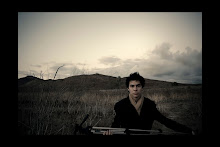I just saw a little clip for the upcoming news show the
other day where a guy was driving in his car listening to music saying
something like, “Does your cat make too much noise all the time???” Haha, I’m
just kidding. No, he was asking how loud was too loud?
Sitting next to this guy at the airport where I can hear his
headphones reminded me of this, and I want to let you in on this. The news
reporter said something about hearing what the experts are saying, at 10, so I
suppose that makes me an expert. I will continue this post as such.
All mix engineers, hopefully, know that 83dB (decibels) is
the best volume to mix at. This is measured in SPL (Sound Pressure Level), and
can be accurately read by an SPL meter found at RadioShack. (The last time
you’ll hear me saying something nice about that store.) Engineers mix at 85dB
not because they won’t lose their hearing, but because it is the flattest
frequency response. (What does that even mean?) I’ll tell you.
People hear frequencies better than others at certain
volumes. If you turn down your stereo, you can hear the vocal range and snare
drum much better than you can hear the bass, or the kick drum. When you turn it
up, everything changes. The fact of the matter is that it does sound better at
louder levels, but go too loud, and it won’t be an even level again. “Frequency
Response” is the term engineers use to define how different a sound changes
from it’s original sound to how it sounds coming out of your speakers. Most
manufacturers of consumer speakers will change their frequency response to make
you think they sound better than other speakers. They’re not necessarily better speakers, but they’ll
emphasize frequencies that bring out certain things in pop music, like vocals. A flat frequency response should be
desired, which means that no frequencies are emphasized or de-emphasized, and
you are hearing more or less exactly what the mix engineer and mastering
engineer intended for you to hear. These speakers are usually very expensive.
The Fletcher-Munson Curve is a chart which plots out which
frequencies are best heard at certain levels in relation to the other
frequencies at that level. It’s confusing, but here is the Fletcher-Munson
Curve.
The flattest frequency response according to the
Fletcher-Munson Curve is 83dB, which is why mix engineers mix at this level. It
also happens to be about the loudest level you can listen to for an infinite amount
of time without any hearing loss. If you are listening to music at 85dB, you
can carry on a loud conversation with the person next to you comfortably. At
90-95dB, you can’t listen to music for more than 8 hours, or else you’ll start
to damage your hearing. 115dB, or rock concert loudness, will damage your ears
in less than an hour.
It is very common for people to listen to music too loud in
their cars. The roar of the engine combined with the road and the wind already
make the car a noisy place. Drowning these out with music will easily get you
up to 90dB. Add in the fact that you’re in a small, enclosed space of flat
reflective surfaces bouncing back that music, which is trying to compete with
volume of your voice bouncing straight back in your face, and that level can
easily reach 100dB if not more.
Be careful out there. You don’t want hearing loss, or
tinnitus. Wear earplugs at concerts, don’t roll the windows down when
you’re on the freeway, turn your earbuds down when other people around you are
bobbing their heads to the same beat.



